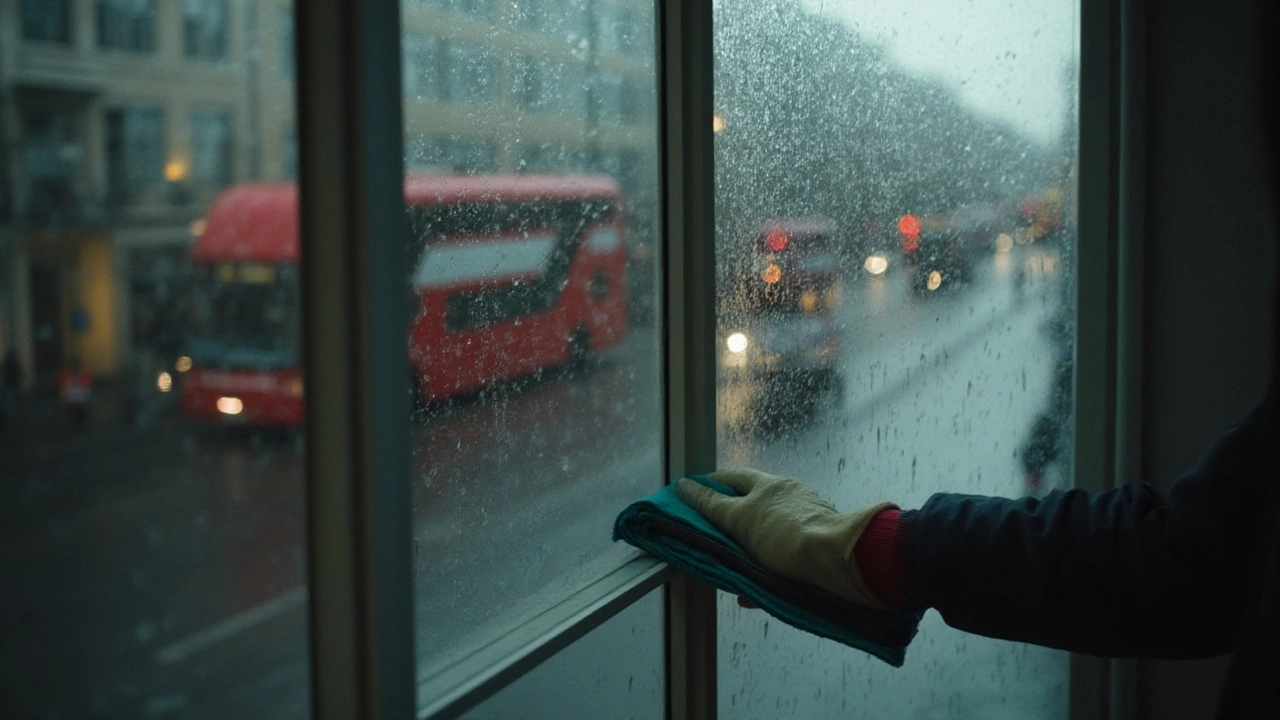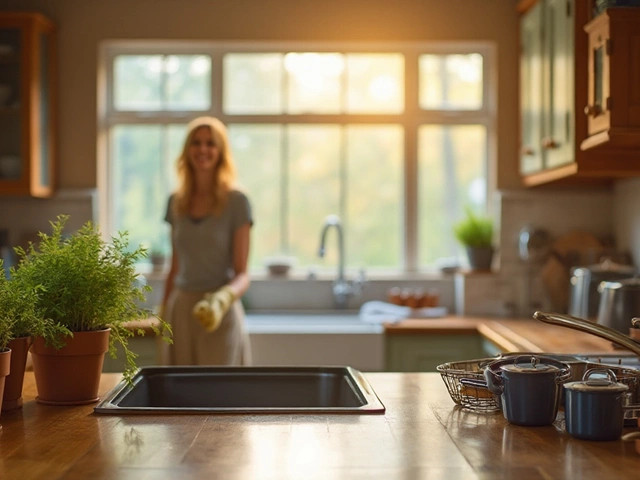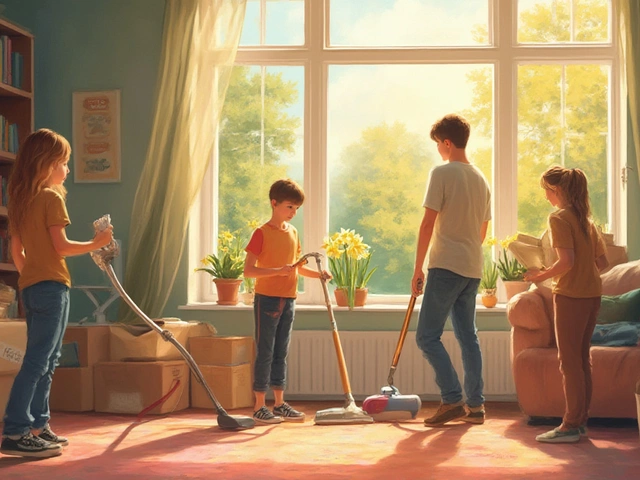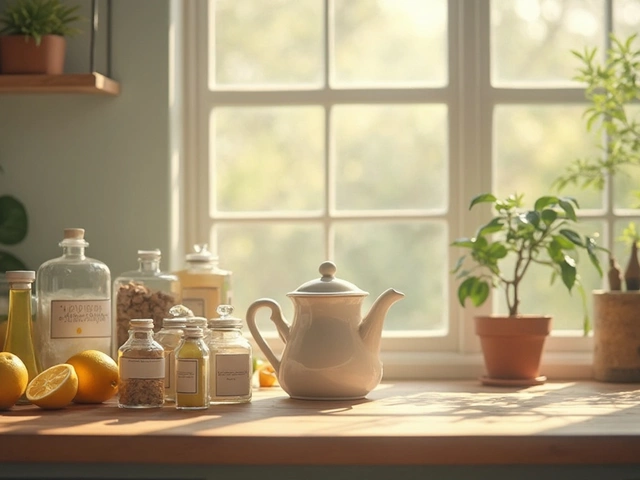Picture spending a bright Sunday morning, not at brunch or lounging, but dangling precariously from a rickety ladder trying to scrub that stubborn grime off your upstairs windows. The sun’s catching on every streak you leave behind. Sounds like a hassle? That’s just scratching the surface. Cleaning windows isn’t the easy, satisfying chore Instagram time-lapses make it out to be. It actually comes with way more downsides than most folks expect—and some can turn a simple Saturday task into a headache or worse.
Physical Risks and Injuries Lurking with Every Wipe
Window cleaning is right up there with the most deceptively dangerous household tasks. Let’s talk numbers: falls from ladders account for around 500,000 injuries annually in the US alone, according to the Consumer Product Safety Commission. Quite a few of those are from people just trying to get clearer windows. The higher the window, the higher the risk. In fact, if you’ve got second- or third-story windows, a tumble can quickly escalate from an embarrassing mishap to a hospital visit.
The physical wear isn’t just about the dramatic falls either. Think about repetitive reaching, stretching, and twisting. These small movements really add up. If you’re not an Olympic gymnast, sore shoulders and pulled back muscles are practically part of the package. I remember when Mara pulled a muscle last year just scrubbing away at the corner panes—she couldn’t lift her arm for a week.
Here’s something people often overlook: even when you follow every safety tip out there (making sure your ladder is solid, using safety gloves, and so on), you’re still working with slippery soap and wet surfaces. Accidents slip in, literally. For folks using old wooden ladders or balancing on rickety stools, one bad step and gravity takes over. It’s one thing if you’re cleaning ground-floor windows, but the stakes jump fast as soon as anyone starts reaching above their head or climbing up high.
Add in the risk of tripping over hoses, squeezing behind awkward bushes, or poking yourself on broken glass you didn’t spot—and suddenly this “simple” chore starts to look like a sports obstacle course.
The Time Sink and Hidden Effort Nobody Talks About
You’d think window cleaning would be a quick-in, quick-out job, right? Not so much. The reality is, washing just a handful of windows can guzzle several hours out of your day, especially if you’re after that perfect, streak-free finish. And those streaks? They love showing up the second sunlight hits just right, no matter how hard you tried.
If you’re living in an older home where paint flakes, or the sashes stick, each window is its own little project. Sometimes, it takes half an hour just to get the old gunk off the exterior ledges before you even touch the glass. Factor in double glazing, storm windows, or security screens, and there’s a whole Russian nesting doll situation happening—more frames, more panes, more mess.
It’s not just a one-and-done task either. Pollen, smog, and bird droppings don’t care about your schedule; the windows start looking grimy again after a few weeks. So if you want windows that stay gleaming, it’s an endless chore. Even if you’re fast, the physical act of moving buckets, wringing out cloths, and getting up and down ladders over and over eats up a surprising chunk of time.
If you’re working during a stretch of unpredictable weather, that doubles the frustration. Rain can mess up your freshly cleaned panes almost overnight, and wind means you’re just replacing gunk with more dust. Those ‘miracle’ sprays that promise a perfect finish in five minutes? Watch out—they often leave behind residue. If you live near a busy road or in a city, expect to clean even more often as car exhaust leaves windows coated in oily grime.

Cost: When DIY Turns Expensive Fast
Strange as it sounds, window cleaning can sneak up on your wallet. Think you’ll save by DIY? Let’s break it down. First, there’s equipment: ladders, squeegees, buckets with wide lips, heavy-duty cleaning solution, microfiber cloths, scrapers, gloves, and maybe even special water-fed poles if you’re feeling ambitious. Scrimp on tools, and you’ll find yourself constantly replacing worn-out supplies or battling streaks with rags that just aren’t up to the task.
A good sturdy ladder alone can run up to $200. Professional-grade squeegees and cleaning solutions, another chunk. These all add up, especially if you buy extra gadgets after realizing the store-bought spray just isn’t cutting through those grimy fingerprints. Some folks try and save by using regular household cleaners, but these can leave behind cloudy residue or even damage the glass after repeated use.
But the expense doesn’t just come from gear. Let’s say you make a mistake and scratch the glass—the cost of replacement (or just smoothing out those scratches) isn’t cheap. If you’re unlucky enough to pop a window pane out of its frame (don’t laugh, I’ve done it), repair bills jump fast.
Hiring a professional? Suddenly, those numbers start climbing with every additional window and floor. According to HomeAdvisor, average costs can run anywhere from $150 for a small service to well over $400 for larger homes or more complicated jobs. And while pros bring safety harnesses, insurance, and a polished finish, getting those windows cleaned a few times a year really adds up.
Not to mention—cleaning solutions that are kind to the planet (and safe to breathe in) usually cost extra. If you’re sensitive to chemicals, buying hypoallergenic or non-toxic formulas can double the price of your basic cleaners.
Environmental and Chemical Concerns
Most glass-cleaning products on the shelves come with a host of chemicals, some of which aren’t great for your lungs, the local wildlife, or your garden beds underneath the window. Ever noticed patches of dying grass or wilting flowers right beneath where you wash? That’s residue from the runoff of ammonia-based sprays or harsh soaps.
If you dump used water full of synthetic detergent straight into your flower beds, those chemicals seep into the soil. According to studies published by the Environmental Working Group, runoff from window cleaning can contribute to waterway pollution, especially if you’re using products with phosphates or alcohol. Even products labeled ‘biodegradable’ can still cause harm if overused or not properly diluted before disposal.
Inside your home, fumes from some of those ‘powerful’ glass cleaners can cause headaches or irritate your eyes, especially in rooms without much ventilation. If you’re a pet owner, certain window cleaning chemicals can linger on sills where cats or dogs like to snooze. Some contain ingredients that are flat-out toxic to animals if licked or touched.
There are greener alternatives, like a simple vinegar-and-water solution or commercial plant-based cleaners, but these don’t always pack enough punch for windows that haven’t been cleaned in months (or years). And, like with other eco-friendly products, you might need to scrub harder and use more elbow grease, which means you’re back at square one with physical effort and time.
| Standard Glass Cleaner (per gallon) | Eco-Friendly Cleaner (per gallon) | DIY Vinegar Solution (per gallon) |
|---|---|---|
| $8 - $10 | $15 - $25 | $2 - $4 |
If you’re dealing with particularly stubborn stains—think sap, hard water marks, or old adhesive residue—safe, planet-friendly solutions sometimes just don’t get the job done, forcing you back into harsher territory.

The Quest for Perfect Results: When Perfection Is Impossible
Window cleaning isn’t just about getting rid of dirt. It’s about wanting spotless, sparkling glass, which is ridiculously tricky to actually achieve. Even with the right tools and all the patience in the world, one wrong swipe and you’ll end up with streaks that only show up in certain light. Drives me mad when you step back after an hour of scrubbing, only to catch sunlight turning those smudges into a spotlight.
Hard water stains, for example, are a pain. The minerals in your tap water leave behind chalky deposits that stick like glue to glass. Commercial products promise a fix, but sometimes you’re left scrubbing over old stains until your arms are jelly. And once you clean one window perfectly, all the others start looking worse by comparison.
Structural issues ramp up the challenge. Warped or painted-shut sashes, triple glazing, storm windows—each needs a different trick to get right. Older homes are notorious for awkward window layouts. Bay windows and skylights might sound like a great design feature, but try reaching the inside corners or tops without smearing dust right back onto your clean section.
Then, there’s the issue of those screens. Most screens are magnets for dust, pollen, and bugs. Cleaning them without bending their frames or tearing the mesh is a delicate process. If you thought the glass was hard, just wait until you try putting the screens back without popping one loose (or breaking your thumbnail, which has happened to me plenty of times).
DIY tips crop up everywhere—use crumpled newspaper, wipe with coffee filters, try a drop of cornstarch. Sometimes these tricks work; other times they just add to the frustration. Want completely spotless windows? Be ready to spend far longer than you planned, and to accept you might never hit that elusive “crystal clear” instead of “good enough.”




